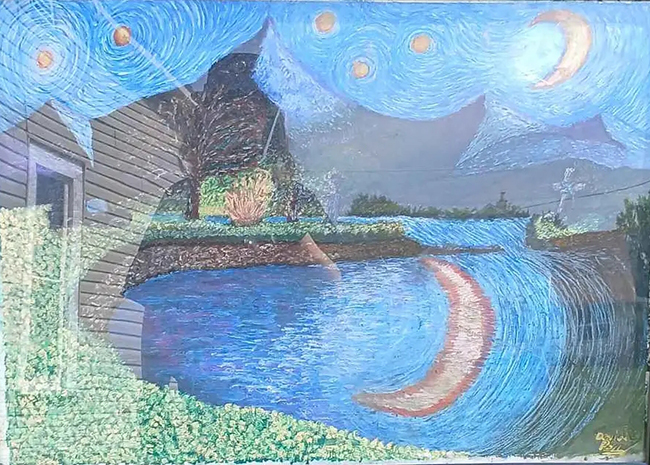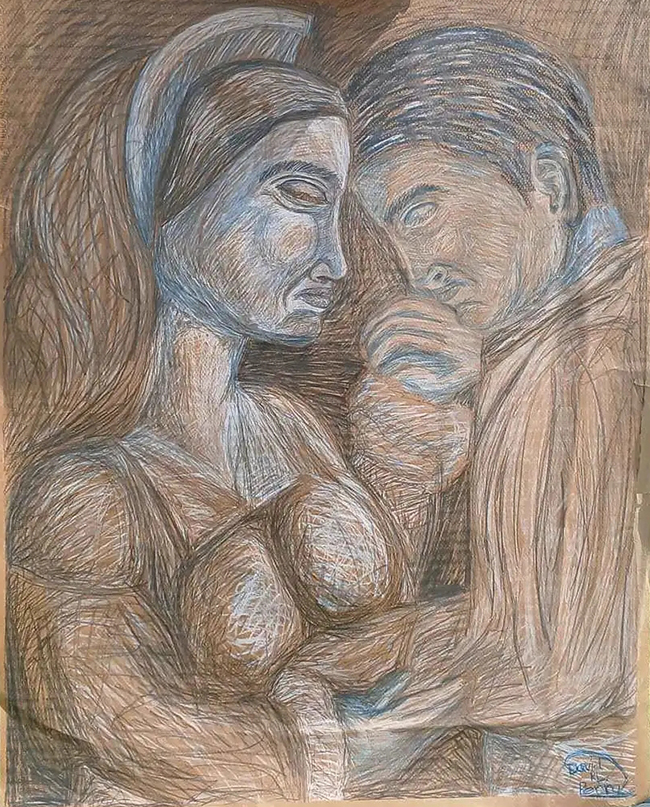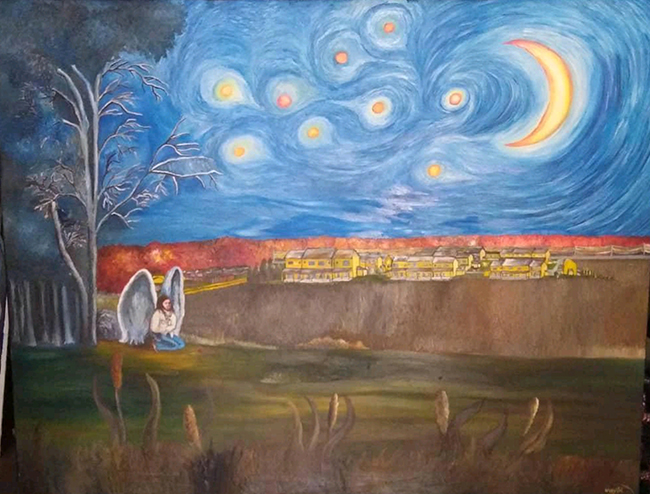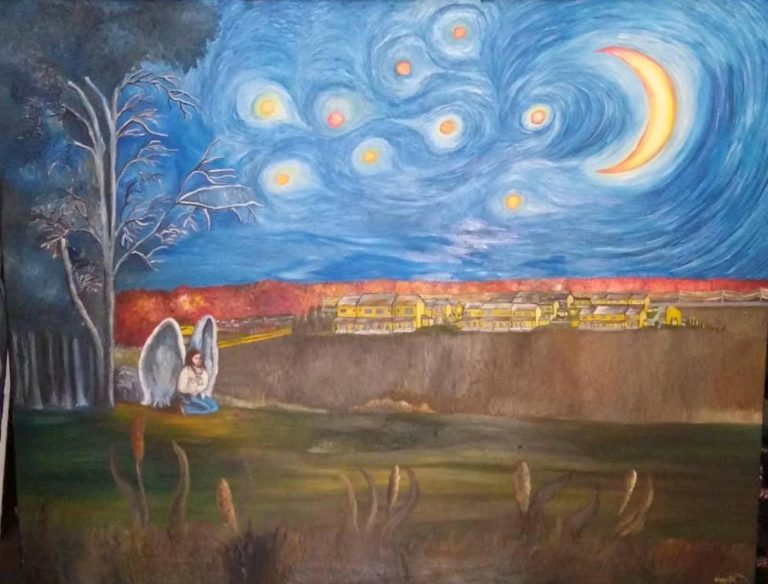David R.L. is a 29-year-old autistic artist, poet, and musician from Marshalltown, Iowa. With 17 years of fine arts experience, his creative journey is one of persistence, imagination, and deep reflection. He began drawing at the age of seven, fascinated by ancient Egyptian artifacts and still life studies. What started as pencil sketches soon grew into a practice that spans painting, drawing, poetry, and music. For David, art has always been more than expression—it is survival, communication, and connection. His practice moves between visual and written language, between rhythm and silence, between the external world and his inner landscapes.
David’s work often blurs boundaries between realism, abstraction, and symbolism. He draws from both art history and personal memory, weaving them into compositions that are layered, textural, and emotionally charged. Whether it’s a reimagined night sky, an intimate portrait, or a spiritual meditation, his work carries a sense of urgency and honesty that is uniquely his own.
The Artworks

One of David’s paintings reinterprets Van Gogh’s Starry Night through his own lens. The canvas shows a river under swirling skies, with a crescent moon mirrored in the water. The setting feels both familiar and strange: a house sits to the side, trees and shrubs are sketched in, yet the sky dominates everything with its turbulent blues and bursts of yellow. The choice to place the moon both above and below—the real and its reflection—creates a dialogue about perception and duality.
The water itself becomes a stage for light, rippling with thick lines of color that echo Van Gogh but speak differently. It feels more immediate, more rooted in personal experience. The river here is not just backdrop; it is a mirror, a threshold, a reminder of how the world is seen and re-seen through the eyes of someone living with autism.

In another piece, David shifts from landscapes to human intimacy. Two figures press close together, their bodies carved out of layered strokes of white, gray, and brown. The style recalls the solidity of sculpted stone—faces heavy, lines deep, forms monumental. Despite the rawness of the strokes, there is tenderness in the way the heads tilt, in how the man seems to lean into the woman, and in the space their closeness creates.
The figures feel almost timeless, as if they belong both to the modern world and to an ancient relief. The textures suggest vulnerability, but also strength. This work speaks less through detail and more through weight and gesture. It shows David’s ability to move between external landscapes and internal, emotional terrains. Where the river painting is expansive, this drawing folds inward, into the private space between two people.

The third work again recalls Starry Night, but with a personal twist. Under a sky alive with swirling stars and a crescent moon, an angel kneels in a field at the edge of town. The angel, painted with large wings and a bowed head, is placed in the foreground, set against a horizon where a cluster of houses glows in warm yellows and oranges.
This piece feels devotional, but not in a traditional religious sense. The angel is not triumphant or grand; instead, it appears contemplative, perhaps even weary. The contrast between the dark field, the illuminated houses, and the sky gives the work a sense of layered realities—earthly life, cosmic movement, and spiritual reflection coexisting in one frame.
Here, David brings together several threads: the influence of art history, the pull of spirituality, and the personal act of bearing witness to the world. It’s a work that feels both universal and deeply personal.
David R.L.’s art lives between worlds—between Van Gogh and Iowa, between memory and vision, between form and feeling. His paintings and drawings show a commitment not only to craft but also to honesty. They are not polished for the sake of polish; they are raw in a way that lets the viewer enter directly into his perspective.
To look at David’s work is to see both the echo of tradition and the insistence of individuality. He revisits Starry Night not as imitation, but as conversation. He renders figures not as portraits, but as vessels of emotion. He places angels in ordinary landscapes, suggesting that the spiritual is never far from the everyday.
Art, for David, began with a pencil at age seven. Today, it continues as a dialogue—between himself and the world, between history and the present, between silence and expression. His journey reminds us that creativity is not just about making, but about living.

